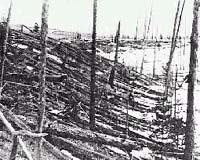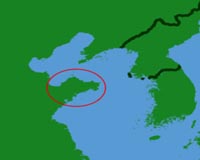
Tunguska Event Still A Mystery 100 Years OnTunguska Event Still A Mystery 100 Years On

Scientists will gather in Siberia to mark the 100th anniversary of the Tunguska Event June 26-28, one of the world’s most mysterious explosions which flattened 80 million trees but largely went unnoticed at the time. The massive blast, equivalent to around 15 megatons of TNT, occurred approximately 7-10 km (3-6 miles) above the Stony Tunguska River in a remote area of central Siberia early on June 30, 1908.
The explosion, which was estimated to measure up to 5 on the Richter scale, knocked people off their feet 70 km away and destroyed an area of around 2,150 sq km (830 sq miles).
And if the explosion had occurred some 4 hours and 47 minutes later, due to the Earth’s rotation it would have completely destroyed the then Russian capital of St. Petersburg.
However, despite the fact that the night sky was lit up across Europe and Asia and the shock waves were detected as far away as Britain, the Tunguska Event largely went unnoticed eclipsed by global events leading up to World War I, the Russian Revolution and subsequent civil war and it was not until almost 20 years later in 1927 that any scientific expedition managed to visit the remote site.
The 1927-expedition led by Leonid Kulik, a leading meteorite expert at the Academy of Sciences, discovered the massive destruction left by the blast and gathered witness statements from locals living in the area. It was assumed that a huge meteorite had hit the area, although Kulik failed, during his research in Siberia, to find an obvious crater.
And around 33 years later another expedition was also unsuccessful in its search for the elusive crater and scientists were faced with the Tunguska mystery – an explosion, 1,000 times more powerful that the WWII atomic bomb at Hiroshima, but which had left no trace as to its cause.
Although there have been dozens of theories since, from UFOs, antimatter, doomsday events and black holes, the most likely being an airborne explosion of a 10-30-meter wide meteorite or comet, none of them has provided conclusive evidence which has merely fuelled the speculation surrounding Tunguska.
At the Tunguska conference in the Krasnoyarsk Territory in Siberia scientists from all over Russia will gather to discuss, using the latest computer technology, as well as less traditional methods, what actually caused the destruction in the remote Siberian region.
As part of the anniversary, in the Evenki autonomous area, a statue of the Evenki god of Thunder, which reflects eyewitness testimony to the events 100 years ago, will be erected at the site believed to be the meteorite crash location.
—————-
Now playing: VOICE OF ILAYARAJA – YENNA
via FoxyTunes



